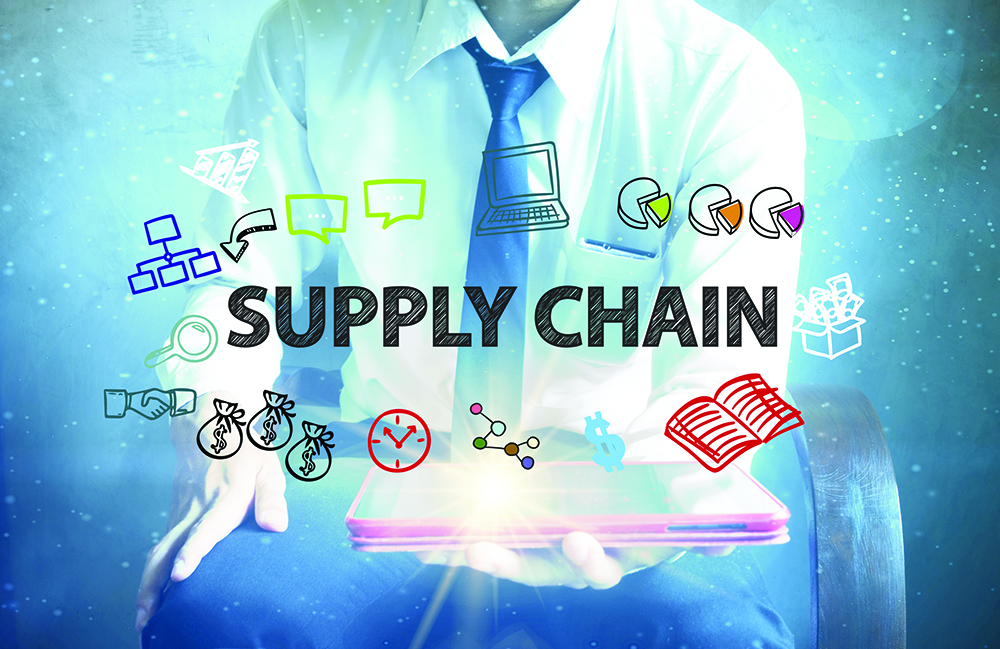News reports may lead you to think retail’s doomsday is here. And yet, Amazon, Under Armour and numerous other niche retailers seem to be doing quite well. Ram Venkatesh looks at the conundrum.
![]() Virtually every news report is about store closings, bankruptcy filings, reorganizations and about possible mergers and acquisitions.
Virtually every news report is about store closings, bankruptcy filings, reorganizations and about possible mergers and acquisitions.
Everyone agrees millennials and technology are the primary culprits. There are over 80 million millennials in America alone which constitute over 25 per cent of the market. Millennials, born between the 1980s and early 2000s accounted for about US$ 2.5 trillion in spending power in the United States of America alone in 2015, according to Youbrand. There are about 2 billion millennials in the world with over 80 per cent living in emerging countries like India, China and Brazil. For global brands and big box retailers, this is a huge market segment that they need to understand to stay in business. While most changes are driven by the millennials, most people including the late baby boomers and Gen-Xers easily fit into this enormous generational market shift that is happening right now.
 Retailers seem to understand the complexity of this market segment and are making changes and strides towards omni channel organisations and systems from merchandising to the last mile delivery systems. They have taken strides to integrate social media platforms into their marketing organisations. But yet, is this enough? I doubt it. The challenge is comparable to the story of David vs Goliath. Why does a startup or a small competitor succeed where a big retailer fails? Is it because they understand the consumer and their lifestyles better, or is it because they innovate products faster? Or perhaps they know each other better through prior engagement, and there is trust through familial engagement with peers or on blogs and social media.
Retailers seem to understand the complexity of this market segment and are making changes and strides towards omni channel organisations and systems from merchandising to the last mile delivery systems. They have taken strides to integrate social media platforms into their marketing organisations. But yet, is this enough? I doubt it. The challenge is comparable to the story of David vs Goliath. Why does a startup or a small competitor succeed where a big retailer fails? Is it because they understand the consumer and their lifestyles better, or is it because they innovate products faster? Or perhaps they know each other better through prior engagement, and there is trust through familial engagement with peers or on blogs and social media.
To answer this, we need to understand the broader, organically-evolving lifestyle changes driven by the millennials and technology. A great report to understand the heart and mind of millennials is the Millennial Consumer Trends by Elite Daily, which describes itself as the premier online news platform for and by millennials. My own summary and take away from this report is:
- Millennials are the most racially, ethnically, diverse, educated and connected population group we have seen in any generation. The comments and conversations with their peer group and experts on social media are more a driver of a purchase decision than simply a price/value proposition.
- They buy with their mind and their heart. They do not trust advertising, but if earned, they are brand loyal. Traditional expectations like quality and customer experience remain but they expect brands to engage with them on social media and be authentic.
- They would like to give inputs and co-create new products. They expect companies to give back to society and be responsible stewards of the environment. They are cost-conscious but will pay more for the right product and the brand that lives their values.
- Technology is in the middle of it all. They are always connected on multiple devices and on social networks. Technology facilitates authenticity and experience.
 This is challenging for big brands and big-box retailers. While most big brands and retailers have always been good at making changes and re-organisations based on linear, cause, effect and results and by wringing cost savings out of the supply chain, changes required this time are more fundamental and organic. This time, it requires a complete overhaul from design to last mile delivery and beyond. It is one total experience from beginning to end with multiple touch points to the consumer who is the driver of it. Throughout this post, I use customer and consumer quite interchangeably and on purpose since the relationship at point of sale is only yet another touch point. How does one visualise one supply chain from product design to customer experience (including product feedback and product return)? Will this evolve to change how we view supply chain?
This is challenging for big brands and big-box retailers. While most big brands and retailers have always been good at making changes and re-organisations based on linear, cause, effect and results and by wringing cost savings out of the supply chain, changes required this time are more fundamental and organic. This time, it requires a complete overhaul from design to last mile delivery and beyond. It is one total experience from beginning to end with multiple touch points to the consumer who is the driver of it. Throughout this post, I use customer and consumer quite interchangeably and on purpose since the relationship at point of sale is only yet another touch point. How does one visualise one supply chain from product design to customer experience (including product feedback and product return)? Will this evolve to change how we view supply chain?
Probably, there are a lot of smarter folks than me working on a successful, futuristic supply chain, but one can postulate on the key characteristics required of such a customer-centric model. The difficulty in the challenge is from the evolution of Supply Chain Management (SCM) itself. SCM means different things to different companies and industries. Over the years, supply chain management has come to mean more of demand assessment, fulfillment and product delivery and logistics. As specialisation and expertise arrived for each function, the original meaning of an integrated supply chain has been lost. Often, with several retailers I have worked for, there are competing criteria for performance within departments like design and merchandising, merchandising and manufacturing or merchandising and sourcing, sourcing and logistics and so on. Many functions are far removed from the customer experience. Many functions do not even see customer data and metrics nor are asked to participate in customer feedback discussions or focus groups.
 Finding new ways of working together
Finding new ways of working together
As we move into this new retail era, the total customer experience will define how well a product will perform. This will require innovation at every step of the way from product to product development and supply chain processes. As Mark Rolston writes on the future of design, “Traditional criteria like form, colour, usability, functionality etc., are still important, but they’re now part of a larger scope of storytelling – not merely how a single product might be defined but how the entire customer experience, often across a growing landscape of touch points and interactions, might unfold for the user.” Similarly, supply chain functions require an orchestral performance with the customer as the conductor. There has to be perfect unison in purpose and amplified collaboration in action.
One company that seems to have a better understanding of this is Amazon. The customer and the customer experience are at the center of it all, from product to service to returns. There is unison and clarity in purpose which we experience when we shop or return a product. Functions within an organisation need to find ways to improve information sharing and performance metrics must reflect common purpose. They need to reflect winning or failing together.
Conflicts are inevitable but leaders with a vision and a bias for the customer and adaptive learning will get it done. More often than not in big organizations, executives are busy building their own fiefdoms or biding their time for a few years before they move on to the next job. They also need better second level leaders and middle managers who are disrupters and believe in change. “People don’t learn by looking in the mirror,” says Ron Heifetz, the Harvard leadership expert. “They learn by talking to people who have different points of view.” Conflict, as they say, is really the engine of adaptive work, the engine of learning.
 New organisation charts and simplified supply chain processes
New organisation charts and simplified supply chain processes
Efficiency, cost savings and quality are not true differentiators of supply chain any more. They are simply the consequence of a cohesive and collaborative supply chain. Over the years, as efficiency, cost savings and quality became the primary goal of the supply chain, the need for specialised skill sets grew.
While specialisation is necessary and has brought huge benefits on the technical side, on the business side it has created isolated functions leaving folks who have no clue about how they impact total customer experience. How many functions and leadership structures does a company really need to get a product to market? I am sure there are vast differences between product categories but just as an example, design, merchandising, product development, sourcing/manufacturing, inventory, planning, quality assurance, operations, logistics, overseas offices, and agents are required.
Clearly, big box retailers don’t manufacture anything themselves. Then, isn’t their best product development guy working for and in their best-in-class supplier’s office or manufacturer’s factory?
Another example is the Vendor-Managed Inventory (VMI), used very successfully in some companies but still sparingly used overall. I would have to believe that my supplier/manufacturer has at least as much or perhaps more vested interests than me in the success of a product. Even with many retailers embracing new and better product life-cycle management tools (PLM), there has been no visible change to their home office organisations. Every hand-off within an organisation is a risk point and every touch point with the consumer is an opportunity. We are seeing some great innovation on the logistics and product delivery side. Technology has been a huge facilitator. Real time information and information sharing has helped. Innovations like online ordering and store pick-up have made every physical location a mini warehouse. True innovation in the last mile delivery system with the Uber kind of companies and drones, promises there is so more to come.
Clearly, the future successful supply chain models will be driven by information, technology, algorithms, collaboration, flexibility, speed and sustainability. Clearly, new technology will force change and speed it up. People and processes must change around it to get the most of the investments. Ironically, through all the new skill set needs and complexity of changes needed, simplicity in the whole process and engaging the customer, may be the key.
It would help to remember that “the customer is not dependent on us. We are dependent on him. He is not an interruption in our work. He is the purpose of it. He is not an outsider in our business. He is part of it. We are not doing him a favour by serving him. He is doing us a favour by giving us an opportunity to do so.”
About the Author:
Ram Venkatesh is a Supply Chain and Global Sourcing Consultant based in Madison, Wisconsin. He has consulted with and worked for several retailers including Walmart Inc, Sears Roebuck, Lands End, and Express. He has lived and worked in several countries working with and leading global teams.










